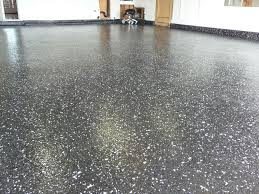Epoxy flooring is one of the common choices famous for both private and business spaces because of its sturdiness, tasteful allure, and simplicity of support. In order to guarantee an effective epoxy floor treatment, it is urgent to follow t a systematic cycle that includes cautious planning, application, and post-treatment steps. This article will give a bit-by-bit manual to assist you with accomplishing a wonderful and durable Garage Floor Epoxy floor finish.
Step 1: Surface Preparation
The way to a fruitful epoxy floor treatment is
legitimate surface planning. Follow these moves toward setting up your floor.
Clear the area: Eliminate
all furnishings, gear, and trash from the floor. Clear or vacuum the surface to
dispense with free soil and residue.
Repair any damages:
Review the floor for breaks, chips, or defects. Fix them utilizing fitting
fillers and fixing compounds. Smooth out lopsided surfaces.
Clean the floor:
Thoroughly use a degreaser or detergent to remove grease, oil, dirt, and other
contaminants.
Etch or mechanically abrade the surface:
Contingent upon the epoxy framework you're utilizing,
you might have to draw the floor using a corrosive-based scratching arrangement
or precisely scrape it utilizing a processor or shot blaster. This step assists
with improving the bond by making an unpleasant surface profile.
Step 2: Primer Application
Prepare the primer:
Mix the primer according to the manufacturer's instructions. Use a stir stick
or drill mixer to achieve a consistent mixture.
Apply the primer: Use
a roller or brush to apply the primer evenly on the floor. Work in small
sections, maintaining a wet edge to avoid lap marks.
Allow the primer to cure: Let the primer cure for the
recommended time, typically 8-24 hours, before proceeding to the next step.
Step 3: Epoxy Application
Prepare the epoxy mixture: Mix the epoxy components
(resin and hardener) thoroughly according to the manufacturer's instructions.
Use a clean mixing container and stir stick to ensure a proper blend.
Apply the epoxy:
Pour it onto the floor and spread it using a roller or squeegee. Work in small
sections, back-rolling the epoxy to ensure an even coat. Use a paintbrush to
cut in around edges and corners.
Optional: Add decorative elements or flakes: If
desired, sprinkle decorative flakes or elements onto the wet epoxy surface.
Allow the epoxy to cure: Leave the epoxy to cure for
the recommended time, typically 24-72 hours, depending on the product and
environmental conditions. Restrict foot and vehicle traffic during this time.
Step 4: Final Touches
and Maintenance
When the epoxy covering has been relieved, you can
play out the last contacts and guarantee legitimate support for enduring
outcomes.
Trim and clean up:
Trim any overabundance of epoxy around edges or apparatuses. Tidy up any
instruments or gear utilizing proper solvents or cleaning specialists.
Apply a topcoat: To
enhance durability and chemical resistance, consider applying a clear topcoat
over the epoxy.




